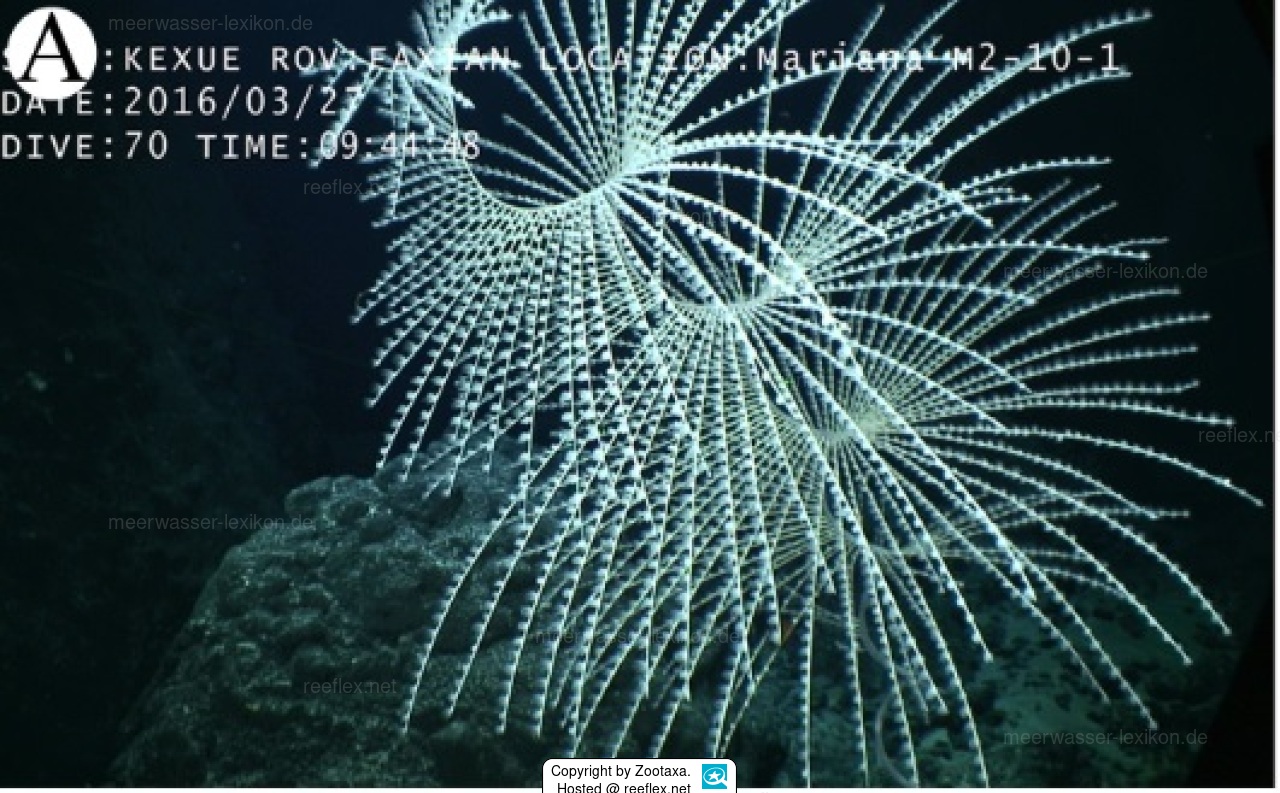Info
It is incredible what nature has "thought up" in terms of shapes, colors, catching, reproduction, protection and catching strategies for our marine creatures.
This becomes especially clear when we look at the beautiful body shape of the deep sea coral Iridogorgia squarrosa.
The coral forms several filigree, one above the other positioned, spiral windings with up to 40cm long branches, at which catch polyps are, which constantly try to catch food from the cold water.
A world of wonders in the depths of the ocean, of which there are unfortunately far too few photo, and film documentations.
A world of wonders, of which many do not know that they exist.
A world of wonders that is threatened and disturbed by deep-sea fishing and must be protected at all costs.
The holotype of the deep-sea gorgonian Iridogorgia squarrosa was collected from a seamount near the Mariana Trench at a water depth of 1458 meters using a submersible (Station FX-Dive 70) in March 2016.
Description:
Each complete coil is 13-15 cm high and 4-5 cm in diameter.
The central axis was 5 mm in diameter at the base and had a dark brown sheen that gradually thickened to almost black at the tip.
The branches were arranged along one side of the axis and sprouted every 3-4 mm.
The most complete branch was 15 cm long and contained 22 polyps.
The polyps were between 2 - 6 mm apart, usually 2 -4 mm high and 1 - 2 mm wide.
The tentacles of the polyps were up to 3 mm long, forming eight distinct columns reaching the base of the polyp.
Etymology: The Latin adjective squarrosus (square rose) refers to the rough sculptures in the sclerites of the species.
Distribution: The coral grew on rocky bottom with a temperature of 3.1 °C and a salinity of 35.8. (35.8 grams of salt per kilogram of seawater).
This species was also found off Molokai, Hawaiii (Dive Pisces V-672, depth 1661 meters) (Les Watling, personal communication).
This becomes especially clear when we look at the beautiful body shape of the deep sea coral Iridogorgia squarrosa.
The coral forms several filigree, one above the other positioned, spiral windings with up to 40cm long branches, at which catch polyps are, which constantly try to catch food from the cold water.
A world of wonders in the depths of the ocean, of which there are unfortunately far too few photo, and film documentations.
A world of wonders, of which many do not know that they exist.
A world of wonders that is threatened and disturbed by deep-sea fishing and must be protected at all costs.
The holotype of the deep-sea gorgonian Iridogorgia squarrosa was collected from a seamount near the Mariana Trench at a water depth of 1458 meters using a submersible (Station FX-Dive 70) in March 2016.
Description:
Each complete coil is 13-15 cm high and 4-5 cm in diameter.
The central axis was 5 mm in diameter at the base and had a dark brown sheen that gradually thickened to almost black at the tip.
The branches were arranged along one side of the axis and sprouted every 3-4 mm.
The most complete branch was 15 cm long and contained 22 polyps.
The polyps were between 2 - 6 mm apart, usually 2 -4 mm high and 1 - 2 mm wide.
The tentacles of the polyps were up to 3 mm long, forming eight distinct columns reaching the base of the polyp.
Etymology: The Latin adjective squarrosus (square rose) refers to the rough sculptures in the sclerites of the species.
Distribution: The coral grew on rocky bottom with a temperature of 3.1 °C and a salinity of 35.8. (35.8 grams of salt per kilogram of seawater).
This species was also found off Molokai, Hawaiii (Dive Pisces V-672, depth 1661 meters) (Les Watling, personal communication).







 Zootaxa
Zootaxa











